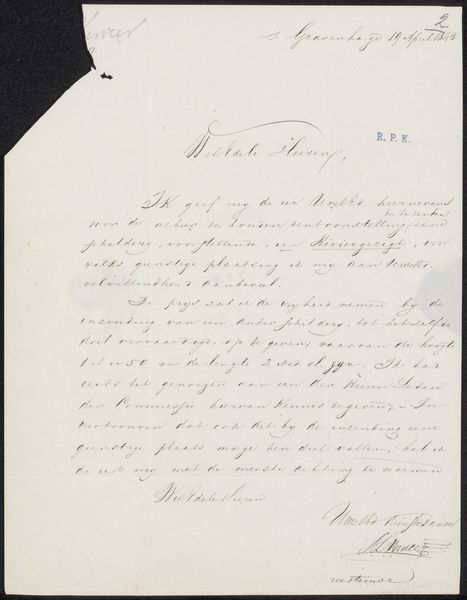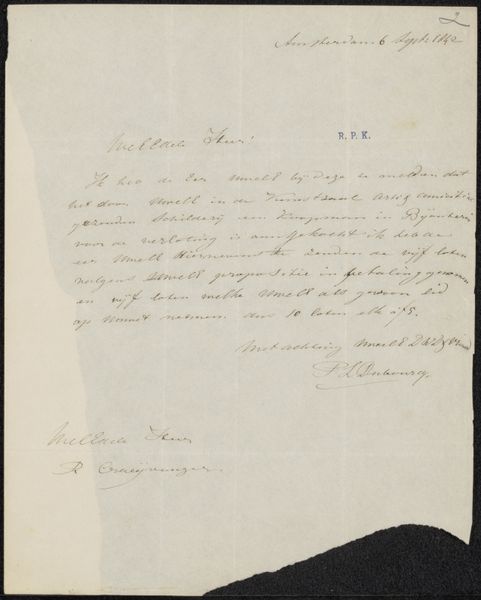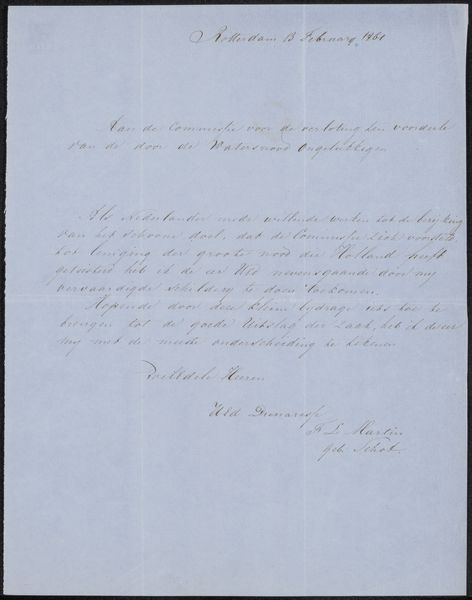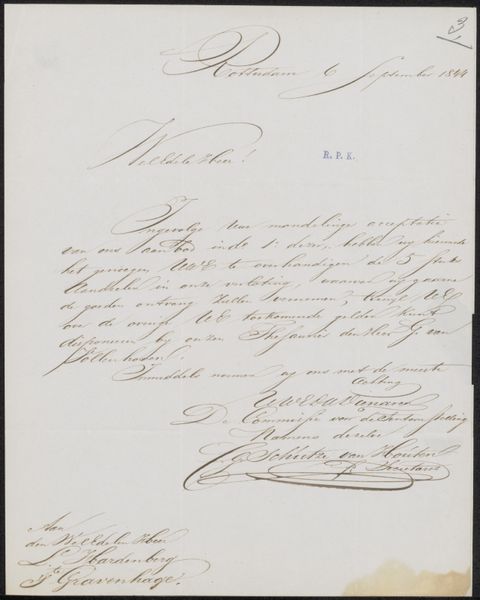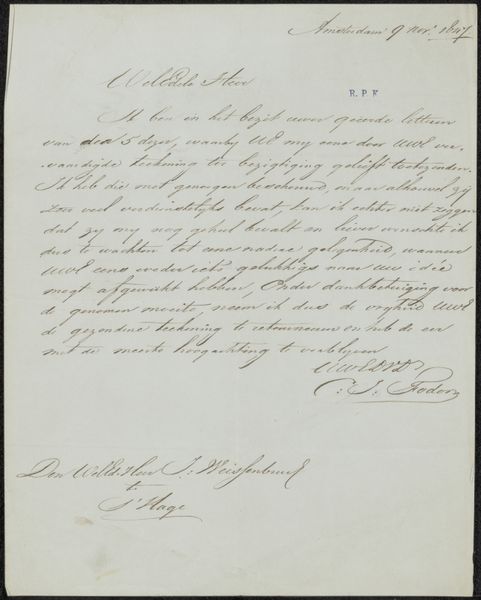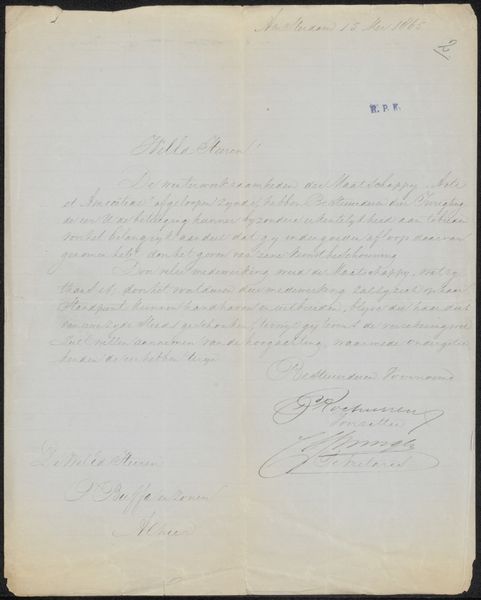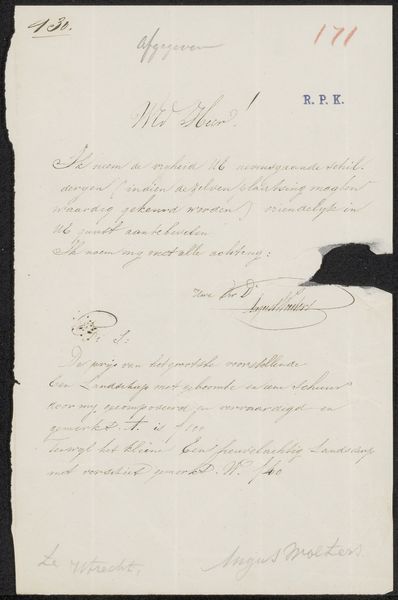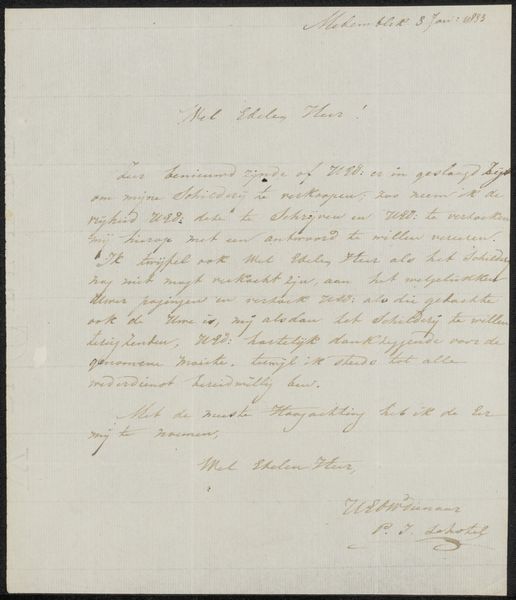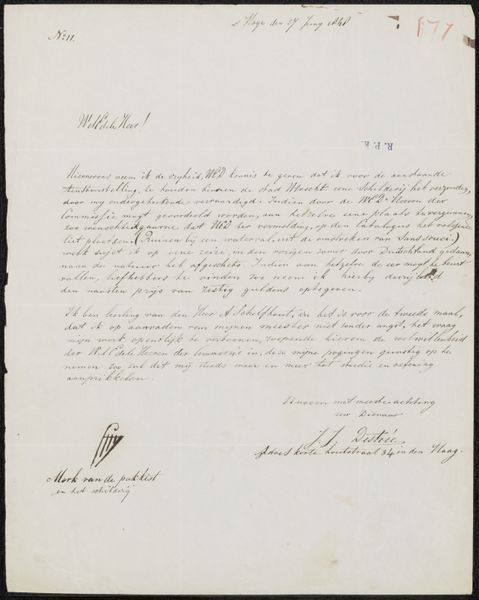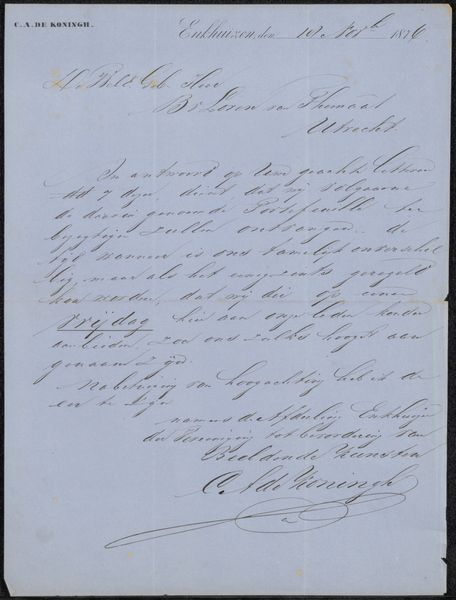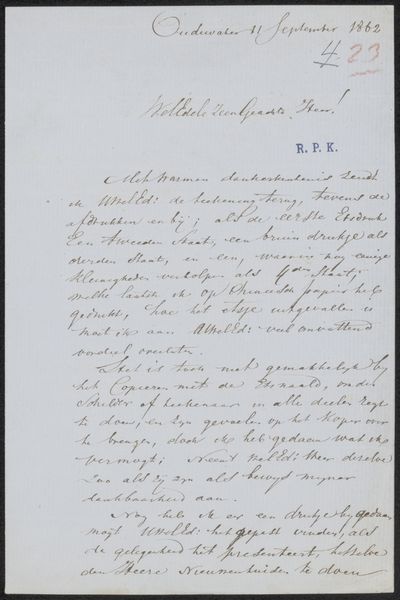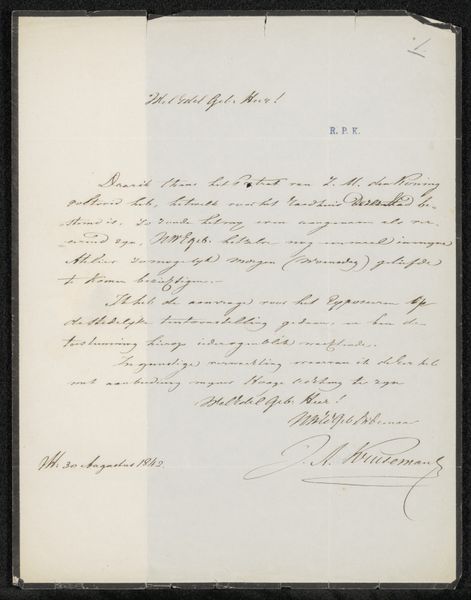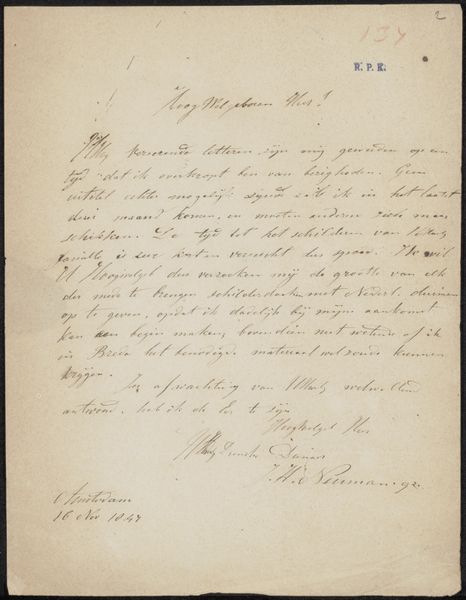
drawing, paper, ink, pen
#
drawing
#
aged paper
#
toned paper
#
homemade paper
#
ink paper printed
#
hand drawn type
#
paper
#
personal sketchbook
#
ink
#
hand-drawn typeface
#
fading type
#
sketchbook drawing
#
pen
#
sketchbook art
Copyright: Rijks Museum: Open Domain
Editor: Here we have "Brief aan Christiaan Kramm," or "Letter to Christiaan Kramm," likely created between 1833 and 1836 by Desguerrois & Co. It’s ink and pen on paper, currently held at the Rijksmuseum. It strikes me as incredibly delicate and personal, almost fragile in its age. What story do you think this letter whispers? Curator: Ah, whispers indeed. For me, this isn't just a letter; it's a time capsule. The faded ink, the aged paper – they speak of a different era, don't they? Notice the handwriting itself; the loops and flourishes. It's a window into the personality of the writer, and into the formal etiquette of communication from that period. The letter is written in French. Why do you think a letter from Amsterdam was written in French? Editor: Good point. Was French the common language for formal correspondence at the time, or was the recipient French, perhaps? Curator: Precisely! French was often the language of diplomacy, culture, and higher society in the 19th century, used across national boundaries. Now, look closer; the content seems to concern a portrait. I wonder about the nature of this back and forth? It gives you the impression, that creating a portrait then wasn't as simple as taking a picture with a phone today. Editor: It makes you realize the collaborative process of art and how important communication was for getting a work right, when it's more involved than pointing and shooting with your phone! It has a transactional element as well: the customer providing the model that the company could attempt to replicate, like any exchange. Curator: Yes! It’s a record of collaboration and a social exchange as well. It also hints at the skill involved to achieve that reproduction using the means available then. Imagine crafting such a document, knowing it might be read centuries later. It prompts us to wonder: what messages are we leaving behind? Editor: Thinking about it now, it is intriguing that the letter's very existence is art in and of itself. Curator: Exactly. It blurs those lines, doesn't it? A simple letter, transformed into a delicate work of art across time.
Comments
No comments
Be the first to comment and join the conversation on the ultimate creative platform.
